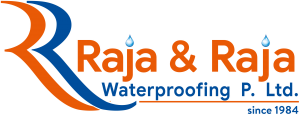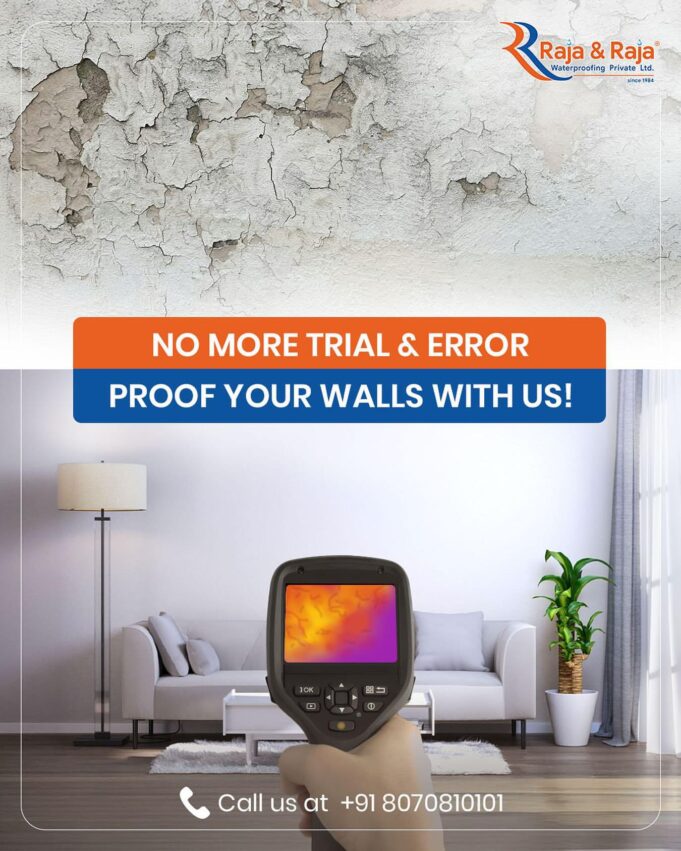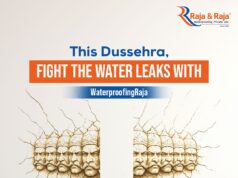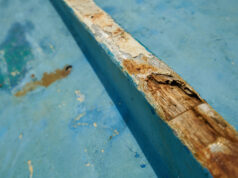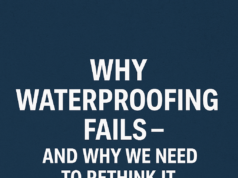Why We Don’t Trust Thermal Scanning Alone 🚫 for Water Leakage Diagnostics
And Why You Shouldn’t Either — As a Homeowner
First, Let’s Understand the Basics
🔍 What Is Thermal Scanning?
Thermal scanning (infrared thermography) uses a specialised camera to detect surface temperature differences on walls, ceilings, and floors without any physical contact.
It measures heat variations and gives you a thermogram, neither water nor moisture.
The camera displays these differences as colour-coded visuals.:
- Cooler areas → Blue or Purple
- Warmer areas → Red, Yellow, or White
It’s a reading of contrast, not a confirmation of leakage or its source.
🎯 The Limitations No One Talks About
💡 A thermal camera does not detect water.
It only shows temperature contrast using thermogram
While the technology appears smart and precise, context heavily determines its reliability..
🌡️ What Affects Thermal Readings?
These thermal images are influenced by factors such as:
- ☀️ Direct sunlight on the surface
- ❄️ Nearby air conditioning, fans, or heaters altering localised temperatures
- ⏰ Time of day — due to the heat gain/loss cycle of surfaces
- 🧱 Surface materials — like tile, plaster, or RCC, each behaves differently
- 🚿 Concealed hot/cold water lines — primarily if recently used
- 🌧️ High ambient humidity or moisture saturation — common during monsoon
- 🔁 Surface reflectivity — exceptionally glossy or glazed tiles- can distort readings.
Here’s a practical insight:
There is no fixed “normal” surface or benchmark temperature globally.
10°C in Chennai feels freezing, but it’s just another regular morning in Shimla.
That’s why all thermal readings are relative unless explicitly specified for a specific purpose.
There is no universal benchmark to declare “this surface has moisture using a temprature measuring tool.”
A thermal scanner is a digital thermometer with a camera lens and image processor that converts pixel-based heat readings into a visual map.
To complicate things further, most glazed surfaces (like tiles, glass, mirrors or shiny surfaces) do not give accurate readings because of their reflectivity. Ironically, leaks often originate exactly in these water-prone zones — bathrooms, kitchens, and WCs — where tiles dominate.
(📌 Note: Glazed or shiny surfaces can reflect ambient infrared waves, showing false positives or unreadable data — a critical flaw most operators overlook)
Most operators don’t even realise this.
📸 How the Thermal Camera Works
Let’s say two nearby surfaces are completely dry:
- Surface A = 30°C
- Surface B = 28°C
The camera will show two different colours, despite no leak, moisture, or structural issue.
And that’s the danger:
The camera doesn’t know your building.
It doesn’t understand materials, the weather, or what’s happening in the room.
It simply detects contrast at the time of the scan.
Contrast without context is confusion.
Your ₹1 lakh camera doesn’t know geography, material behaviour, or recent usage.It just shows contrast.
Interpretation depends on human expertise to corelate and interpret.
Also, if an area is entirely wet or entirely dry, it may appear uniform, giving you no clues at all, leading to completely wrong conclusions.
⚠️ Leaks Are Often Hidden, And That’s the Real Problem
Most water leaks start deep inside the structure, such as:
- Below the tile bed
- Inside the RCC or slab
- At wall-floor, wall-wall or wall-ceiling junctions
- Around concealed plumbing
A thermal camera can’t see through surfaces.
It’s not an X-ray or MRI for your home but just a colour doppler for the thermal readings.
It’s like diagnosing a fever based on someone’s shirt colour.
Sadly, homeowners often blindly accept and defend these methods and reports.
🧠 Then Why Is Thermal Scanning Still Used EXPLICITLY?
In one word? Eyewash
Because it looks scientific.
A colourful thermal scan feels like a high-tech diagnosis — even when it’s not.
Many service providers:
- Impress clients with gadgetry instead of genuine answers
- Avoid real inspection
- Avoid a detective work
- Use thermal contrast as a guesswork
You get a “report” full of red and blue patches, but the person behind the scan might be unable to tell you the real cause, how they arrived at it, or how to fix the problem.
I remember an incident from a conference presentation. I was a speaker and presented on the diagnostics of Water Leakage in High-Rise structures at a reputed Engineering Forum. I got a question from the audience: “Do you use thermal cameras or other diagnosis tools?”
I smiled and replied with a counter-question to establish a context:
“Do you know that excess salt or sugar is hazardous to your health?”
The engineer nodded, “Yes.”
“But we still consume it — in balance to taste.”
Exactly.
We use thermal cameras, moisture meters and scanners, endoscopes, shore hardness, rebound hammers, and ultrasonics. Still, we don’t rely on them blindly.
Then you might have a question,
What is the right way to inspect a leakage source and a leaking site?
🧩 So, What Works RIGHT?
Our step-by-step method includes:
- Have a 360° understanding your building’s construction and structure
- Have the structural and construction layouts been studied
- Have the complete details about the material used and its properties
- Checking historical signs and failure points
- Observing visible damage — stains, swelling, efflorescence
- Reviewing tool readings with caution as required (Thermal camera, endoscope, moisture meter, rebout hammer, ultrasonic etc)
- Chalking & Mapping potential water paths
- Correlating symptoms with actual building behaviour and weather conditions
Yes, tools help and make conclusions faster.
But tools don’t replace experience.
Leaks don’t announce themselves — you need someone who can read the signs and track them down..
✅ What We Do at Raja & Raja®
Yes, we use diagnostic tools responsibly, and a Thermal camera is one tool among many, but we don’t rely on it blindly.
At Raja & Raja® Waterproofing Pvt. Ltd., thermal scanning is just one piece of a comprehensive, experience-driven diagnostic system — built on:
- 40+ years of expertise
- A small, agile, and proficient engineering team
- 11.5 lakh+ site visits
Here’s how we actually work:
- Study the topography and geography
- Study the structure, the building layout and its orientations
- Use a flow-based checklist to collect factual data
- A series of designed questions to have a fair understanding of the history of the issue
- Using tools, identify and question their cause
- Mapping potential sources to the layouts
- Correlate with visual symptoms, site history, building behaviour and weather conditions
- Apply analytical reasoning from the data archives, not assumptions
- Deliver a diagnosis that is logical & actionable.
We don’t just see colours on a screen.
We decode building behaviour, studying how water interacts with the structure, from the inside out.
✅ Our Promise to Homeowners
We’ve been solving Water Leak challenges for over 40 years through diagnostics followed by remedial & protective Waterproofing.
And we promise:
✅ To deliver the solution
❌ No shortcuts
❌ No gimmicks
❌ No over-reliance on gadgets
✅ Just honest, skilled, behaviour-based diagnostics — with respect for your home, your time, and your Peace of Mind.
🏠 Facing a Leakage Problem?
Don’t settle for a flashy scan and a vague report.
Get an assessment backed by construction science and proven logic.
📞 Contact us on +918070810101.
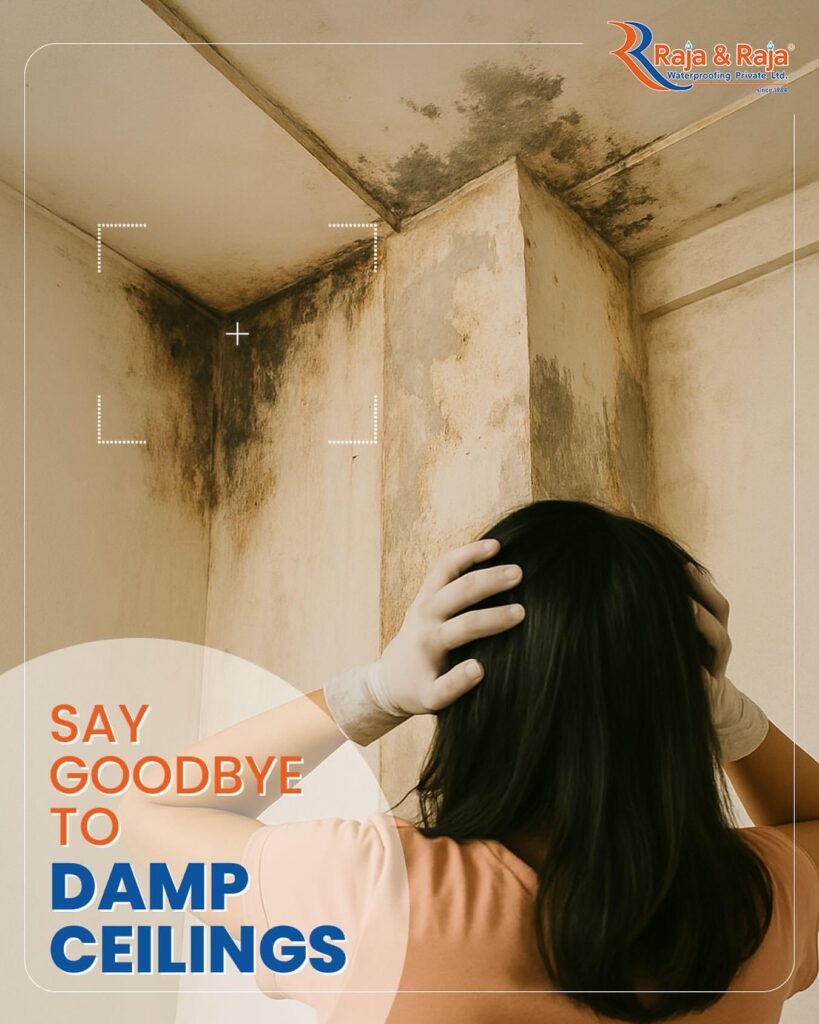
🔖 Do it Right FIRST Time. Always.
👇 Curious how we pinpoint and fix leaks precisely?
Leave a comment or message us — we’d love to help you protect your home.
Rev 1.0 dated 21-05-2025
